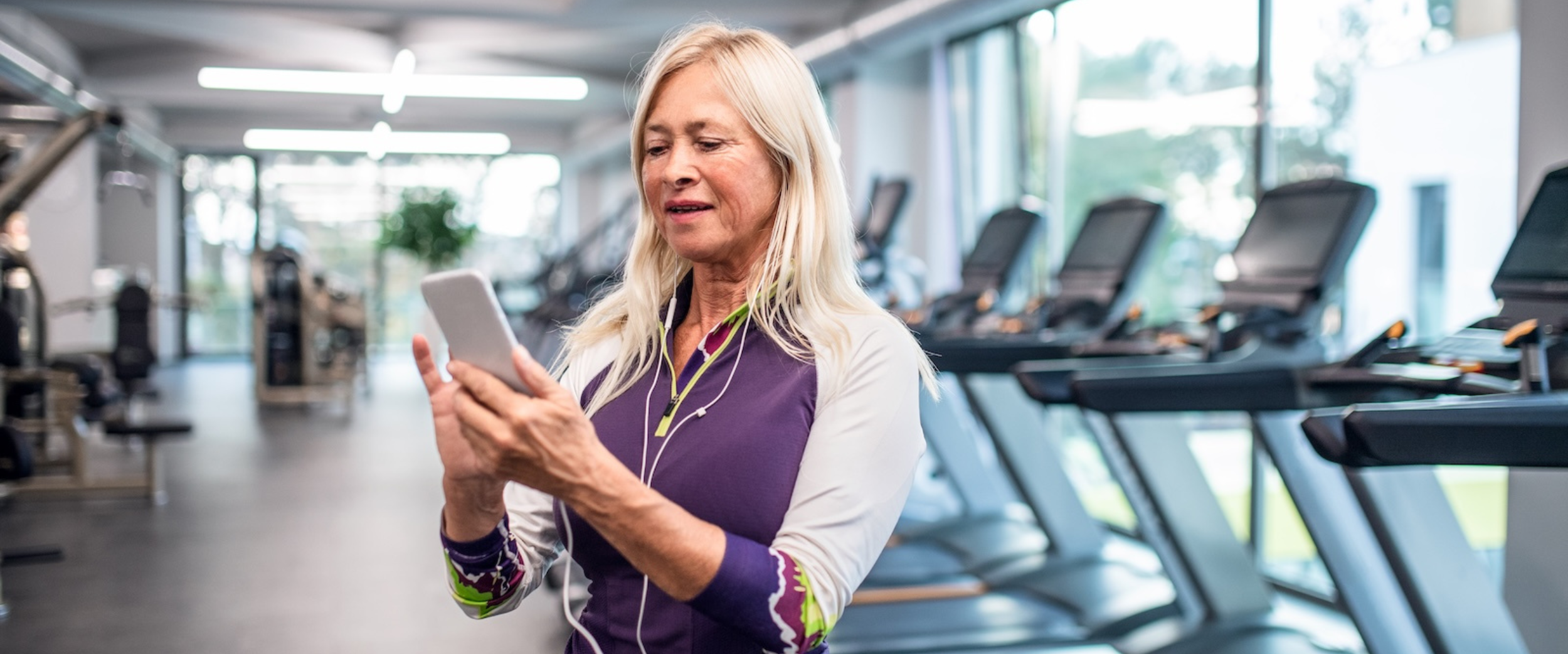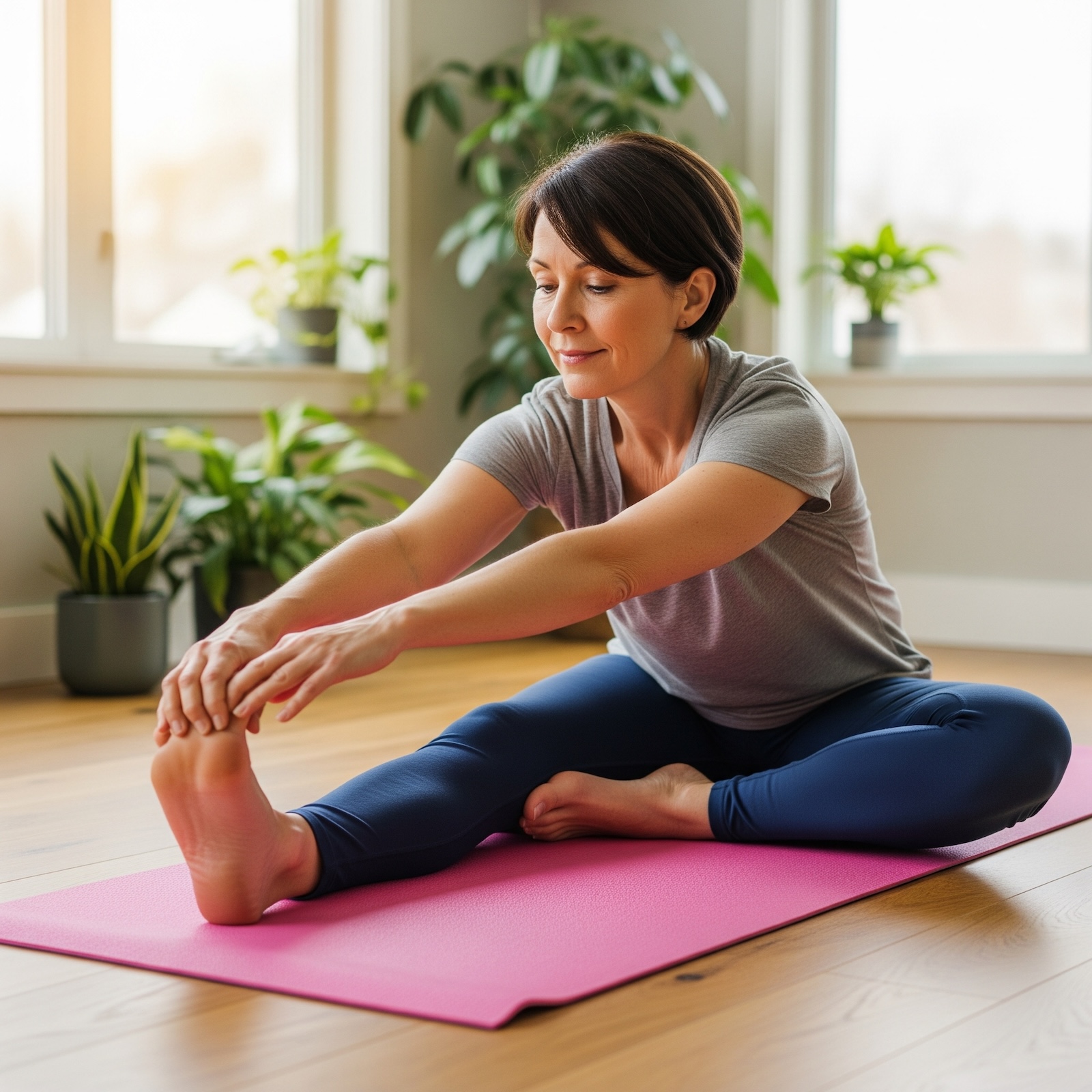
You’re working out, lifting weights, eating your veggies, taking collagen, and doing all the “things” you’re told to get healthier. Except… nothing’s working. It doesn’t seem like you’re progressing much, and the number on the scale isn’t shifting.
If you can relate, you know what it’s like to feel the frustration of hitting a plateau. And if you’re a woman 40-plus, you might be wondering if you can chalk it all up to hormonal shifts. You might not be sleeping as well, and you’re constantly tired, making workouts feel even harder.
While stalling can make you feel ready to give up, it’s actually your body giving you a sign that it’s ready for something new. What worked before doesn’t work anymore, and that’s okay. It’s an opportunity to try new things and maybe, actually prioritize rest (because yes, you do need more of that).
In this article, we’ll share five strategies to break past plateaus that might not all seem intuitive, but have the science to back them up.
Hustle society makes us believe that rest is equivalent to laziness, which couldn’t be further from the truth. Rest isn’t slacking — it’s strategy. Your body is no robot (and even those need time to recharge). The better you take care of your battery life, the more energy you’ll have overall.
Rest is when your muscles repair and rebuild the tears made when working out. It’s also when your bones get strengthened, and your nervous system resets.
While it’s counterintuitive, one of the best ways to break through a strength plateau is to take a break, especially if you’re 40-plus. Recovery needs change with every decade, along with how stiff your lower back or joints feel.

Here’s what can help your body get the rest it needs to repair itself:
Our metabolism can also slow down when we undereat, leading to plateaus. Not getting enough food can signal to your body it’s in survival mode, i.e, “Hold on to fat, we may need it since there’s not enough food.”
Undereating can be a hidden culprit of plateaus, along with eating enough but not nourishing yourself with vitamins and minerals. Deficiencies can mess with our stress and energy levels, hormones, and sleep, indirectly making us want to work out less and eat more.
So if you’re working hard to cut back, consider that what your body might actually need is more. More nutrients, more energy, and very importantly, more satisfaction (which is one of the best ways to cut cravings. Being bored with food is a great way to trigger late-night eating).
Nourishing steps to focus on:
A multivitamin or calcium and vitamin D supplement can also make a big difference. Almost 41% of American women 40-plus are vitamin D deficient. This can lead to low energy and mood, weakened immunity, higher risk of fractures, and slow muscle recovery. And if you’re cranky, tired, and getting sick often, there are fewer chances you’ll want to work out, too.
When it comes to adding protein, you don’t have to heap scoops of protein powder into everything. In fact, we’ve got 14 easy ways to increase your protein intake without it.
While tracking calories can be helpful for some in the short term, it can also come with drawbacks. Many of us track calories, hoping that the less we eat, the lower the number on the scale will go. Except, it doesn’t always work like that — especially when your body has been chronically deprived of food in the past or is going through hormonal changes.
Instead, try tracking:
You can use this information to shift your workouts to what suits you best, depending on how energized you are. That info can get you much farther with gaining strength and muscle, since calories tend to follow a generic calculator, not taking into account things like stress or mood.
If you do want to track your calories to get a general idea of patterns and how much you’re eating, you could also try a few different wearable tools that come with a variety of health tracking info (like heart rate, steps, sleep, etc.) — for example, a Fitbit, an Apple Watch, or an Oura Ring.
A journal, calendar, or notes app is another great way to start noticing and writing down what’s going on and when. From there, you might notice patterns and triggers (like how nights with less sleep lead to more snacking for energy).

We tend to notice progress more quickly when we first start working out. The newness of the challenge makes our muscles work harder, leading to the initial “newbie gains.” Once you adapt, though, you need to find new ways to challenge your body. This technique is called progressive overload, where you consistently increase or change resistance.
Here are a few ways to continuously practice progressive overload:
If you’re hesitant to increase weight or switch things up because you’re worried about hurting yourself, you might want to consider getting a personal trainer. Even if it’s just for one or two sessions, they’ll teach you specific movements and recommend weights for your needs and goals. You can also ask for specifics, like joint-friendly modifications, to be sure you’re doing everything correctly and keeping yourself safe.
Your muscles are smart. If you do the same workout for weeks (or months), you’ll get really good at it. Once your muscles adapt, they’re not as challenged, which means less growth. Now, they can handle curling 12 lbs no problem, so the muscle tissues aren’t being torn — which is when growth happens. Tiny tears in your muscle fibers signal your body to repair and rebuild them stronger than before. Even mechanical tension (like a deep stretch) can improve muscle growth.
Here are a few things that can help challenge your muscles again:
Progress isn’t only defined by what you see in the mirror or on the scale. While the beauty industry has worked hard to make us believe that the shape of our bodies defines our worth or “success”, real progress can pop up anywhere.
Here’s what actual growth looks like:
You….
Plateaus feel like a setback, but they’re actually your body telling you it’s ready for a shift. It’s data, not defeat. For many women 40-plus, that means cutting back on HIIT workouts and adding more strength training and rest days. For others, it’s a sign to try something totally new, like a dance class or a personal trainer to switch things up.
Above all, the most important thing in moments of frustration is self-compassion. Research points out over and over again how self-criticism leads to worsened physical and mental health.
So, rather than beating yourself up for not seeing gains more quickly, try noticing something that has changed for the positive. In fact, you can add a little something to your workout routine called The Daily Three, where you write out three positive things you’ve noticed throughout your day (doesn’t have to be fitness-oriented at all). While you’re training your muscles, you can also work on training your thoughts to work for you, too.
Trainwell isn’t full of the stereotypical trainers you see on TV. We’re here to help you put sustainable well-being strategies into action — one smart tweak at a time. Whether it’s adjusting your resistance, mixing up your routine, dialing in your nutrition, or prioritizing rest, our trainers will meet you where you’re at and guide you forward.
With a 1-on-1 trainer and an intuitive app (complete with motion tracking, messaging, and tailored plans), you’ll focus on today’s wins — because progress isn’t a transformation; it’s a series of small steps that add up.
Try 14 days free to see what it’s like to have someone who supports you to try new things and gives you permission to rest, all the while lifting you up to feel your best.
Written by Jennifer Olejarz.